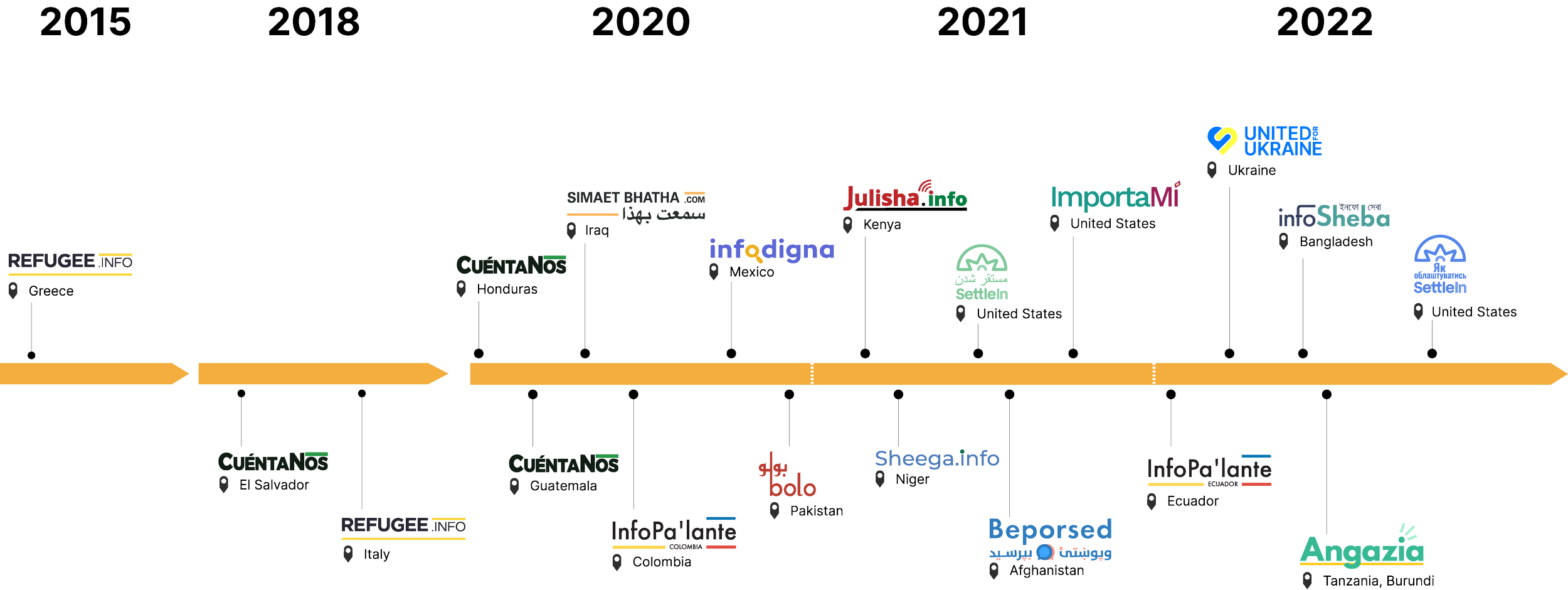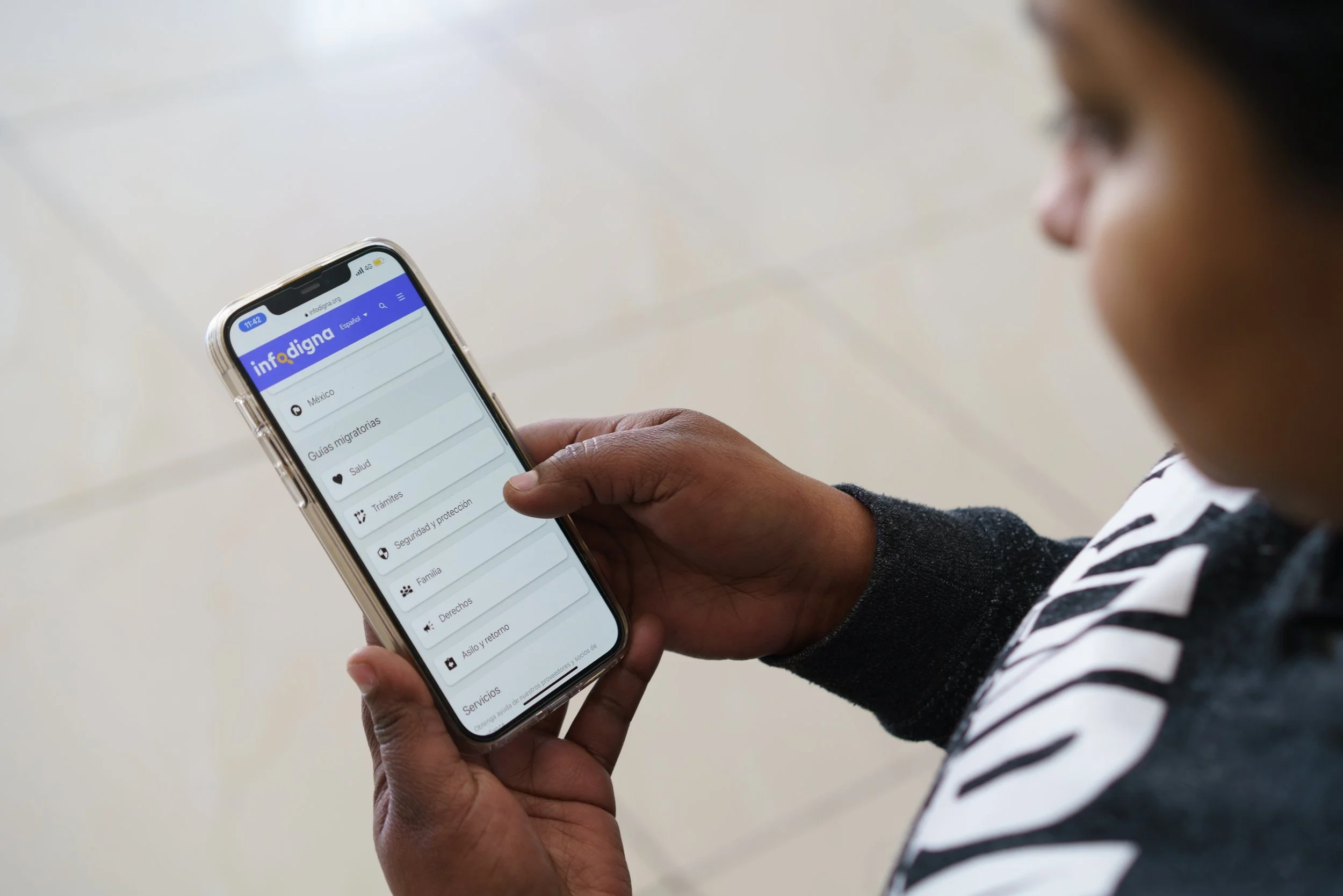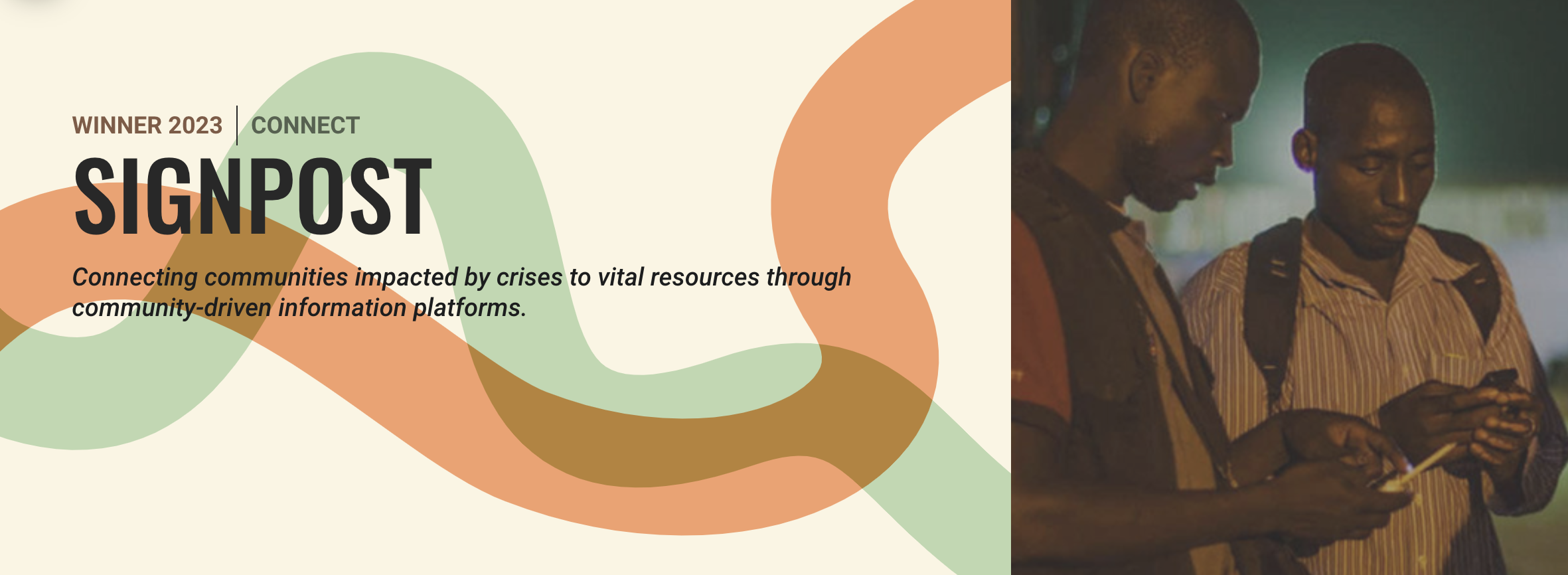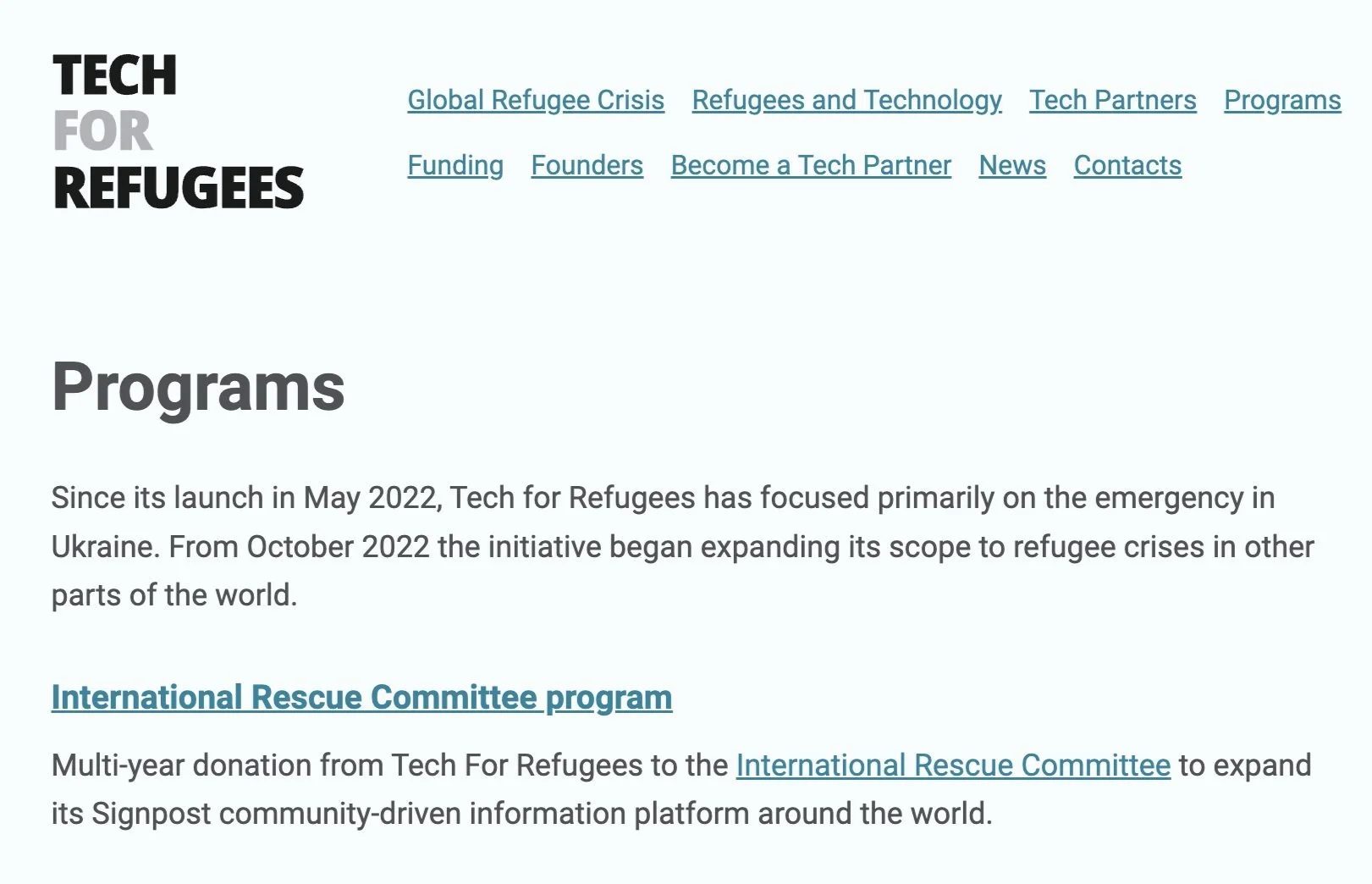History
Signpost was launched by the International Rescue Committee and Mercy Corps in 2015 at the height of the European refugee crisis. This initiative was designed to respond directly to the needs of refugees arriving in Greece with nothing but their cell phones. Under the name of Refugee.Info, Signpost was responding to the complex needs of the massive influx of people into Europe – many of whom were seeking asylum. Refugee.Info provided asylum seekers with accurate, regularly updated information that was translated into the languages they spoke and understood.
As the refugee crisis impacted the central Mediterranean region and the Balkans, the programme grew throughout the region. IRC and Mercy Corps, the founding members, chose to launch Signpost in different use cases — one in Jordan to meet the information needs of refugees in the sprawling camps and another in the Central American countries of El Salvador and Honduras to support victims of domestic and gang violence and those deported from the United States. Through these initial experiences, Signpost proved the concept as it became clear that its programming model had a strong value added in many contexts.
Since Signpost has a proven concept, both its programming model and technology tools have been refined and developed further drawing from evidence and data generated while programming, surveys, UX research and advice from industry-leading technology companies. Since that time, Signpost has expanded to 20 countries on 5 continents. Two additional nonprofit partners — Internews and NetHope — have joined the collaborative project.
Growth
When Signpost first launched in 2015, there were 65 million forcibly displaced persons. Today, displacement is at an all-time high, with an estimated 108 million people forcibly displaced worldwide. Forced displacement is expected to steadily increase, in light of protracted conflicts and crises brought about by climate change.
At the beginning of 2020, Signpost had just three active programs worldwide. It has since experienced 466% year-over-year growth, now with 20 active programs and planned growth of ten more. The Covid-19 pandemic acted as a significant catalyst for Signpost programs — it displayed the need for contextualized information and the importance of combatting misinformation. With many people remaining in their homes, internet usage increased and activities once held in-person were moved online.
With over 4.6 billion people using mobile internet worldwide, Signpost is uniquely positioned to help people in crisis, wherever they may be.

People fleeing Ukraine load onto full buses at the Polish border.
February 2022
By the Numbers
What do these numbers mean?
An estimate of the number of unique individuals who came into contact with Signpost’s information product(s) across all digital platforms. This includes individuals who may or may not have engaged substantially with content.
Reach
An estimate of the total number of unique users who engaged with Signpost's content. It is the best estimate of clients benefiting from Signpost information across all digital platforms and can be thought of as “engaged reach.”
Unique Users
Signpost Evidence Review
This white paper reviews the evidence supporting and informing the Signpost project’s methods on delivering a digital, responsive information service.
Key findings include:
Evidence which supports Signpost’s work: that Signpost empowers users to make informed decisions related to their livelihood, safety and wellbeing in times of crisis.
Projects like Signpost meet a critical and often neglected need within the aid sector to provide trusted, timely, accessible, accurate, and context-adapted information.
With the COVID-19 pandemic underway at the time of publication, one section is dedicated to combating misinformation and how it helps build trust in communities affected by crisis.
Our Vision for the Future
Signpost’s vision is to give the power of information to the most neglected and “last mile” communities in crises worldwide: to empower and equip communities in need to reclaim a sense of control over their lives and make the decisions that are best for them.
From 2020 to 2023, Signpost scaled into 20 countries, having been active in just three countries at the beginning of that time period. In 2023-2024, it will expand programs into 10 additional countries thanks to secured growth funds.
Signpost is rapidly and sustainably scaling, improving its practices and technology, and is poised to become a new essential component of the architecture of aid responses worldwide. Signpost aspires to create a broader consortium of implementing agencies and to raise the profile of its work among development actors and UN agencies.
Signpost seeks to engage more broadly around the world and see its vision of making information a global public good become reality. Doing so would allow the aid sector to imagine a better world — where receiving critical, reliable information is the rule rather than the exception in humanitarian and development spaces. In doing so, communities worldwide would be empowered to make their own decisions — affirming the dignity of those in need.











